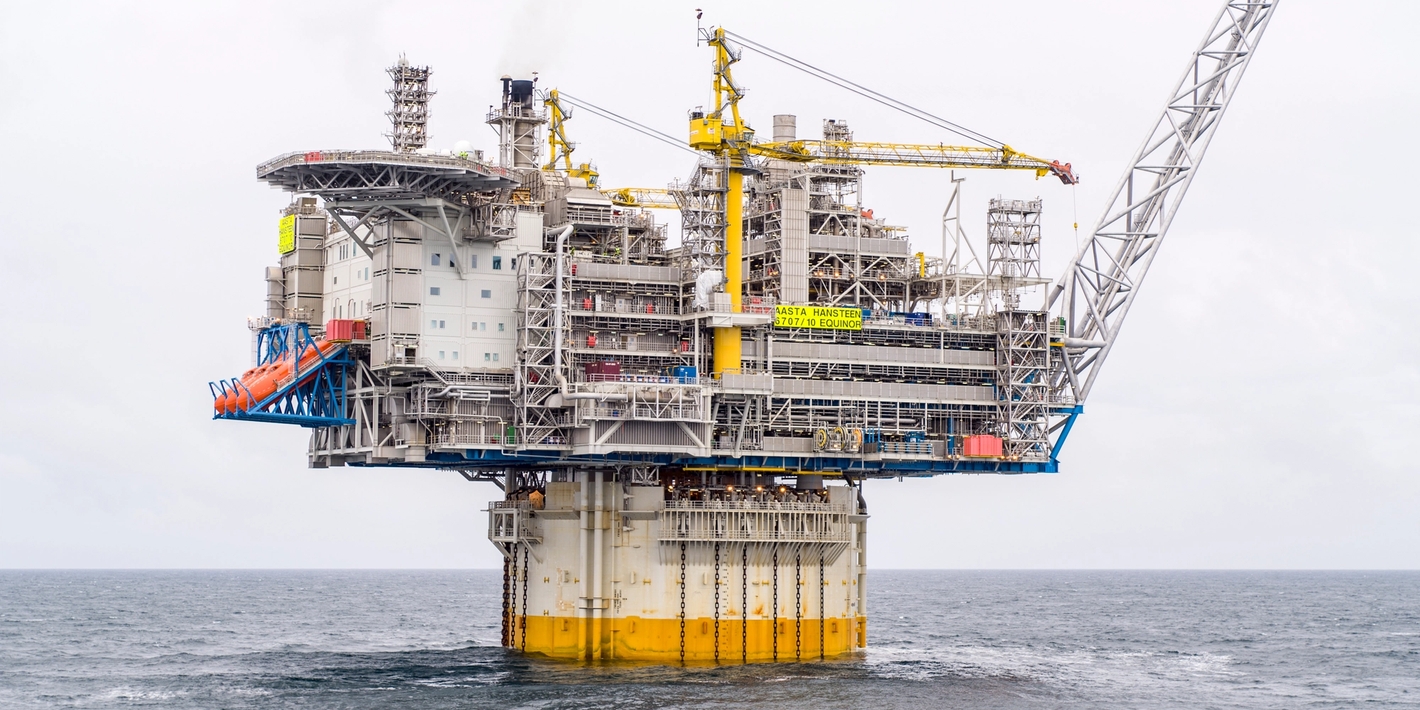Norway’s deepest field development
Aasta Hansteen is the first spar platform on the Norwegian continental shelf – and the largest in the world. The Aasta Hansteen field is located at a depth of 1,300 metres in the Vøring area in the Norwegian Sea, 300 kilometres west of Sandnessjøen. The floating platform is taller than the Eiffel Tower.
The Aasta Hansteen field originally included the three discoveries Luva (1997), Haklang and Snefrid Sør (1998). The plan for development and operation was submitted to the authorities in January 2013, and the development was approved by the authorities in June the same year. A new discovery was made in the area in 2015, Snefrid Nord, which was tied into the Aasta Hansteen field.
The field is currently producing at plateau. Aasta Hansteen is considered to be a possible host for adjacent discoveries once the field's production is no longer at plateau.
In November 2022, Equinor (on behalf of the partnership) submitted a plan for development and operation (PDO) for the Irpa gas discovery, formerly known as Asterix, to the Norwegian Minister for Petroleum and Energy. The Irpa discovery will be developed with three wells and an 80-kilometre pipeline to the Aasta Hansteen platform.
Overall reserves for Aasta Hansteen and Snefrid Nord are estimated at 55.6 billion standard cubic metres (Sm3) of gas and 0.6 million Sm3 of condensate. This corresponds to 353 million barrels of oil equivalent.
Aasta Hansteen started production on 16 December 2018 and Snefrid Nord came on stream toward the end of 2019. Gas is transported via the Polarled pipeline to the Nyhamna terminal for further export to the UK. Produced condensate is offloaded to tankers and shipped to the market.
Aasta Hansteen bolsters the position of both Equinor and the Norwegian continental shelf as a long-term and reliable supplier of gas to the Continent and the UK. Equinor is experiencing strong demand for gas.
Aasta Hansteen is the deepest field development on the Norwegian continental shelf, at a depth of 1,300 metres. The gas field development concept includes three seabed templates that produce to a floating platform with a vertical, cylindrical hull anchored to the seabed (spar platform). This was the first of its kind on the Norwegian continental shelf and the largest in the world. It is also the first in the world to have storage tanks for condensate. The Snefrid Nord development utilises a well template tied into the Aasta Hansteen field.
The 70,000-tonne, 339-metre-tall platform was towed to the field in April 2018, the largest tow on the Norwegian shelf since Troll A in 1995.
The Aasta Hansteen field is operated from Harstad, by Equinor's Operations North organisation. The supply base is located in Sandnessjøen, and the helicopter base is in Brønnøysund.
The field took its name from a different pioneer: Women's rights activist, avid participant in public discourse, painter and author Aasta Hansteen.
Polarled
Polarled is a new, 482-kilometre-long gas pipeline from Aasta Hansteen to Nyhamna in Møre og Romsdal County. The plan for installation and operation (PIO) was submitted and approved alongside the plan for development and operation (PDO) for Aasta Hansteen in 2013. Pipeline installation was complete in September 2015, and provides an export solution for gas from both Aasta Hansteen and other fields in the Norwegian Sea. The project includes an expansion of the Gassco-operated facility at Nyhamna. The pipeline is facilitated for the connection of existing and future discoveries in the area.
Facts:
- Proven by BP in 1997, Equinor has been the operator since 2006.
- Located 300 km from shore, northwest of Sandnessjøen in Nordland County.
- The closest installation (Norne) is 140 km away, and the field is 500 kilometres from Nyhamna, which is the closest gas infrastructure with available capacity.
- The gas is dry and has low CO2 content.
- The presumed recoverable volume, including Snefrid Nord, is 55.6 billion standard cubic metres (Sm3) of gas and 0.6 million Sm3 of condensate. This corresponds to 353 million barrels of oil equivalent.
- Production started 16 December 2018
The tow
- The tow of the Aasta Hansteen platform was the largest on the Norwegian continental shelf since Troll A in 1995. The floating platform weighs 70,000 tonnes and is 339 metres tall.
- There are 500 nautical miles between the Digernes strait at Stord to the Aasta Hansteen field, and with an average speed of about 2 knots, the tow took 11 days.
- Five tugs from three different companies transported the platform safely up north.
- The tug fleet had a total of 150,000 horsepower.
- At the shallowest point, the clearance under the keel was a mere 14 metres – and only 20 metres up to the high-voltage cable across the Langenuen strait.
- When the platform arrived on the field, it was connected with 17 anchor lines, each 2,500 metres long.
